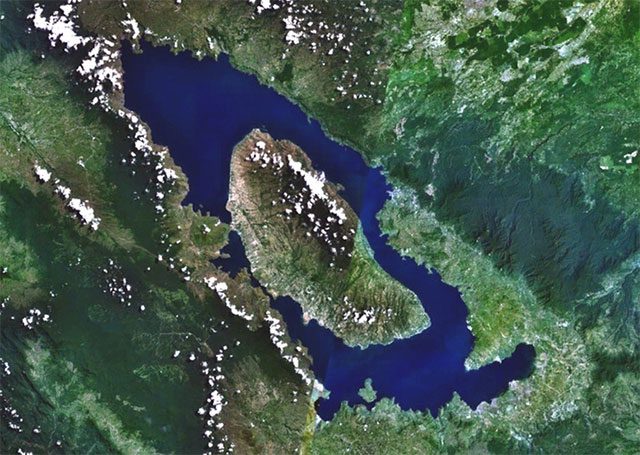An International Research Team Discovers a Surprising Cause Behind Human Population Bottleneck 60,000-100,000 Years Ago

Lake Toba in Indonesia is actually a supervolcano that caused a halt in human reproduction – (Photo: NASA).
A collaborative project between King Abdullah University of Science and Technology, King Saud University (Saudi Arabia), Max Planck Institute for Chemistry (Germany), and NASA (USA) has determined that during this period, the ozone layer was severely depleted more than at any other time in Earth’s history. The main culprit was the “fire monster” Toba, a dormant supervolcano known today as Lake Toba in Indonesia.
According to Phys.org, the catastrophic eruption of Toba during that time was enough to plunge the planet into what is known as a “volcanic winter”, as the cloud of ash it produced blocked sunlight, along with a massive release of volcanic gases, particularly SO2. This significantly hindered ozone formation, leading to severe depletion of this protective layer for living organisms, increasing the risk of ultraviolet (UV) stress for all life forms.
The volcanic winter also caused the oceans to cool, prolonged El Niño events, reduced crop yields, and spread diseases. These combined factors resulted in a decline in human reproduction rates, with high UV levels adversely affecting survival rates, while simultaneously promoting evolution.
The research team utilized the ModelE climate model developed by NASA’s Goddard Space Flight Center to simulate the consequences of the Toba supervolcano eruption. The SO2 cloud from Toba reduced global ozone levels by up to 50%.
The study was recently published in the scientific journal Communications Earth & Environment.





















































